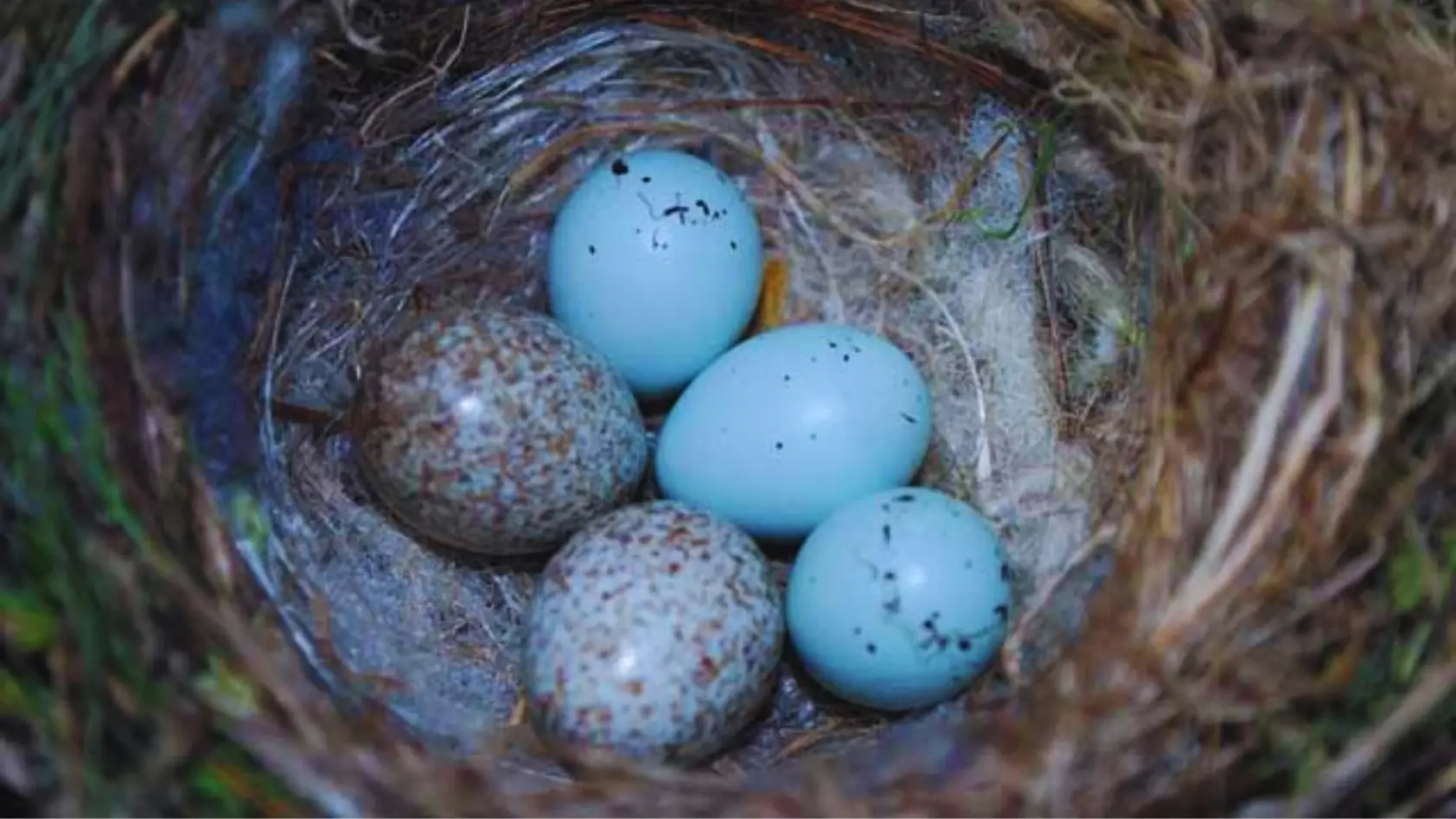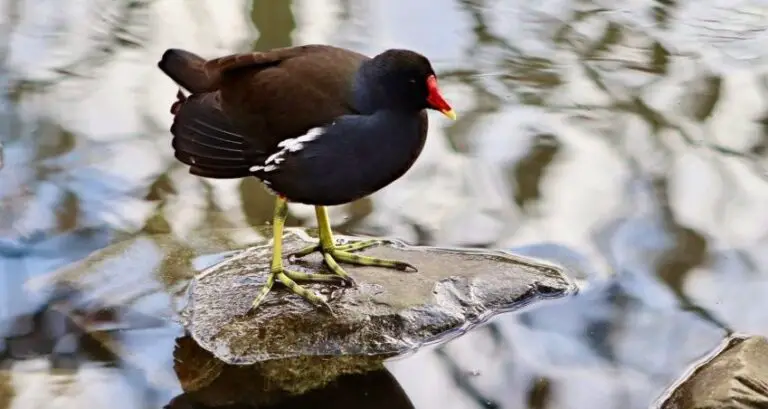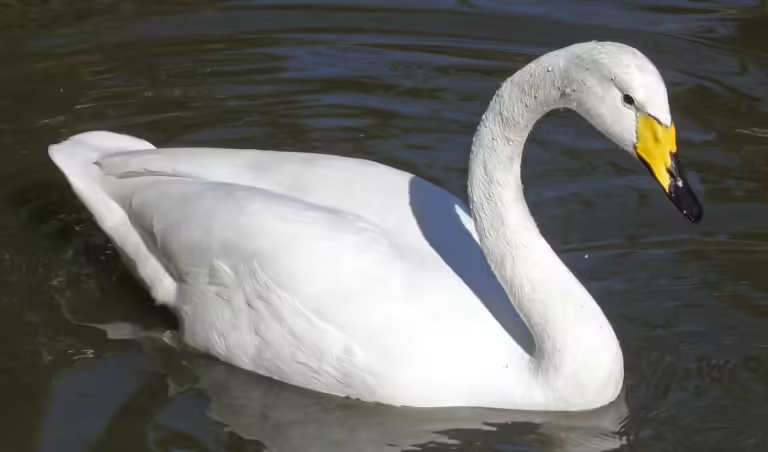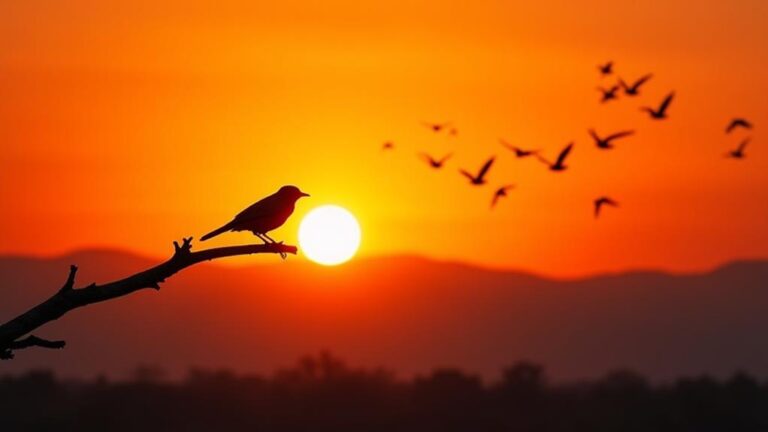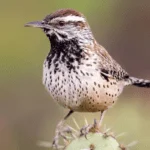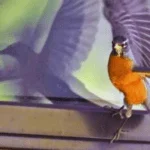Have you ever wondered about the fascinating process of avian reproduction? Well, get ready to witness the wonders of house finch eggs! These delicate creations hold the key to new life and are a testament to the marvels of nature.
From the moment of fertilization to the hatching of adorable chicks, every step in the journey is a remarkable testament to the power of life. As you delve into this article, you will discover the intricate process of egg formation, the vital role of incubation in ensuring healthy chicks, and the incredible growth and development that occur within the confines of the eggshell.
However, it is not all smooth sailing for these little eggs, as they face various challenges and threats. That is why conservation efforts are crucial to preserving the beauty and wonder of avian reproduction.
So, get ready to be amazed by the captivating world of house finch eggs!
Key Takeaways
- House finch eggs are a marvel of nature, with delicate and beautiful eggshells that provide protection and nourishment for the growing embryo.
- Parent birds play a vital role in the survival and growth of their offspring, providing constant warmth, nourishment, and protection.
- Conservation efforts are crucial for protecting house finch eggs and ensuring their survival, as they face challenges such as predation, human interference, and the threat of climate change.
- Witnessing the hatching process of house finch eggs is awe-inspiring and showcases the resilience and wonder of avian reproduction.
The Journey Begins: Fertilization and Egg Formation
As you watch the house finch pair tirelessly building their nest, you can’t help but feel a sense of awe as you witness the miraculous journey of fertilization and egg formation taking place right before your eyes.
It all begins with the male house finch, who puts on a dazzling display of colors and song to attract a mate. Once he successfully catches the female’s attention, they engage in an elaborate courtship ritual, with the male singing and fluttering his wings to impress her.
During copulation, the male transfers his sperm into the female’s reproductive tract, where it will eventually meet her eggs. Inside the female’s body, the eggs slowly mature and develop, each one possessing the potential to become a new life. It’s a remarkable process that happens without any conscious effort from the birds themselves.
After fertilization, the female begins the process of forming the eggshell. She synthesizes calcium and other minerals from her diet, which are then used to create the hard outer layer of the egg. This shell provides protection for the growing embryo inside, shielding it from harm and providing a stable environment.
As you continue to observe the house finch pair, you can’t help but marvel at the intricate process of fertilization and egg formation. It’s a testament to the wonders of nature and a reminder of the incredible diversity and beauty of life.
Nest Building and Incubation
During nest building and incubation, it’s truly fascinating to observe the intricate processes that unfold. The female house finch takes on the responsibility of constructing the nest, utilizing various materials such as twigs, grass, and feathers. She meticulously weaves them together, creating a cozy and secure environment for her eggs. Witnessing her dedication and attention to detail is awe-inspiring.
Once the nest is complete, the female begins the process of incubation. This involves keeping the eggs warm and protected until they hatch. She sits on the eggs for the majority of the day, using her body heat to maintain the optimal temperature. It’s incredible to see her commitment as she diligently rotates the eggs to ensure even heating.
To better understand the emotional impact of witnessing this remarkable journey, let’s take a moment to reflect on the significance of the house finch’s efforts. The table below captures some of the emotions that may arise while observing nest building and incubation:
| Emotion | Description |
|---|---|
| Awe | Overwhelmed by the beauty of nature unfolding |
| Wonder | Curiosity and amazement at the processes |
| Gratitude | Appreciation for the opportunity to witness |
As we continue to observe the house finch’s journey, we are reminded of the wonders of avian reproduction and the importance of preserving and protecting these incredible creatures.
The Eggshell: A Protective Barrier
Get ready to be amazed as you learn about the incredible protective barrier that surrounds the house finch’s precious eggs. The eggshell is truly a marvel of nature, providing a safe haven for the developing chicks. Here are five fascinating facts about the eggshell:
- Thickness: Despite its delicate appearance, the eggshell is surprisingly strong. It is composed of calcium carbonate and is about 0.3 millimeters thick, offering a sturdy shield against external pressures.
- Pore System: The eggshell contains tiny pores that allow for gas exchange. These pores enable oxygen to enter the egg and carbon dioxide to exit, ensuring the proper development of the growing chick.
- Camouflage: The eggshell is beautifully colored, with variations ranging from pale blue to greenish-white. This coloring helps the eggs blend into their surroundings, providing camouflage and protection from potential predators.
- Shell Pattern: If you look closely, you’ll notice intricate patterns on the eggshell’s surface. These patterns are unique to each individual egg and serve as a form of identification for the parents, preventing them from accidentally damaging or abandoning another bird’s eggs.
- Shell Strength: Despite its thinness, the eggshell is remarkably strong. It can withstand the weight of the incubating parent bird and protect the eggs from harm, ensuring their safe development.
The eggshell truly is an amazing creation, providing a robust and protective barrier for the house finch’s precious eggs.
Embryonic Development: From Cell Division to Organ Formation
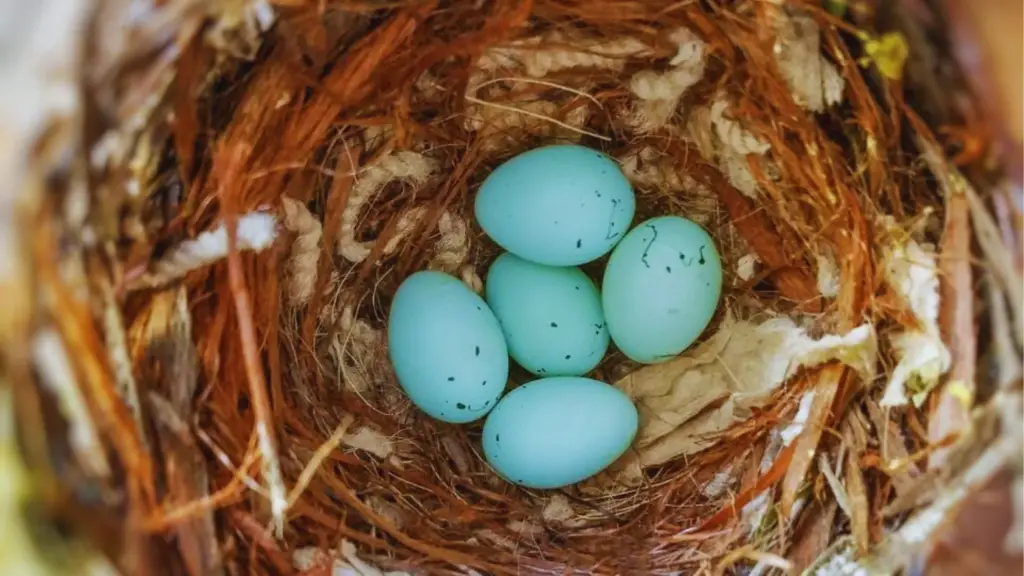
Prepare yourself to witness the intricate process of embryonic development in the house finch. Cells divide and organs form, creating new life within the protective confines of the eggshell.
As the house finch eggs progress through development, the cells divide rapidly, multiplying and differentiating into various types of tissues and organs.
At first, the embryo is just a cluster of cells. But as time goes on, it begins to take shape. The cells start to organize themselves, forming the different layers that will eventually become the various organs of the bird. The heart starts to beat, pumping blood through the tiny veins, and the nervous system begins to develop, allowing the bird to perceive the world around it.
As the days pass, the embryo continues to grow and develop. Its beak, wings, and legs start to form, and the feathers begin to emerge. Each day brings new changes and progress in the development of the house finch.
Witnessing this incredible process is a reminder of the wonders of life and the intricate mechanisms that drive it. It is a testament to the beauty and complexity of nature, as well as a reminder of our own connection to the natural world.
So, take a moment to appreciate the miracle of embryonic development in the house finch. Cells divide and organs form, creating new life within the protective confines of the eggshell.
The Role of Incubation in Ensuring Healthy Chicks
Ensure healthy chicks by providing constant warmth through incubation, the nurturing embrace that safeguards their growth and development as they prepare to hatch into the world.
Incubation is a vital process that plays a crucial role in the successful reproduction of house finches. During this period, the parent birds dedicate themselves to the task of keeping the eggs warm. The warmth provided by the parent’s body helps maintain the optimal temperature required for the eggs to develop properly.
Incubation ensures that the developing chicks receive the necessary amount of heat that is essential for their growth. The parent birds take turns incubating the eggs, ensuring that they are constantly exposed to the right temperature. This constant warmth allows the embryos to develop and progress through the various stages of their development, from the initial cell division to the formation of organs.
Moreover, incubation also helps protect the eggs from external elements and predators. The parent birds diligently guard the nest and maintain a safe environment for the eggs. This protective behavior ensures that the developing chicks are shielded from potential dangers, allowing them to grow and thrive without interruptions.
In conclusion, incubation is a critical aspect of avian reproduction, particularly for house finches. It provides the necessary warmth, protection, and nurturing environment for the eggs, ensuring the healthy development of the chicks. By faithfully carrying out incubation duties, the parent birds play a vital role in the successful hatching and survival of their offspring.
Hatching: Breaking Free from the Eggshell
Experience the awe-inspiring moment when you witness a tiny, fragile life break free from its protective shell, as you discover the incredible process of hatching. As you observe a house finch egg, you are captivated by the intricate steps that lead to the emergence of a new life. Here are five remarkable aspects of the hatching process:
- Pip, Pip, Hooray! The first sign of hatching is the creation of a small hole called a ‘pip’ on the eggshell. The chick uses its egg tooth, a small, temporary structure on its beak, to peck at the shell and create this initial opening.
- Take a Break. The chick rests between periods of pip-making. This allows it to regain strength and gives time for the blood vessels within the eggshell to dry up, making it easier for the chick to breathe.
- The Great Escape. With each peck, the chick gradually enlarges the hole until it is big enough to push its way out. It uses its feet and its beak to crack the shell and make its grand exit.
- Hello, World! Once the chick has fully emerged, it may take some time for it to dry off and become strong enough to stand. Eventually, it will join its siblings in the nest, ready to experience the wonders of the world.
- Nature’s Miracle. Witnessing this extraordinary journey reminds us of the incredible resilience and adaptability of nature. The hatching process is a testament to the remarkable cycle of life and the beauty of avian reproduction.
As you witness the hatching of a house finch egg, you can’t help but marvel at the strength and determination of this tiny creature. It is a reminder of the miracles that occur in the natural world, right before our eyes.
Parental Care: Feeding and Protecting the Hatchlings
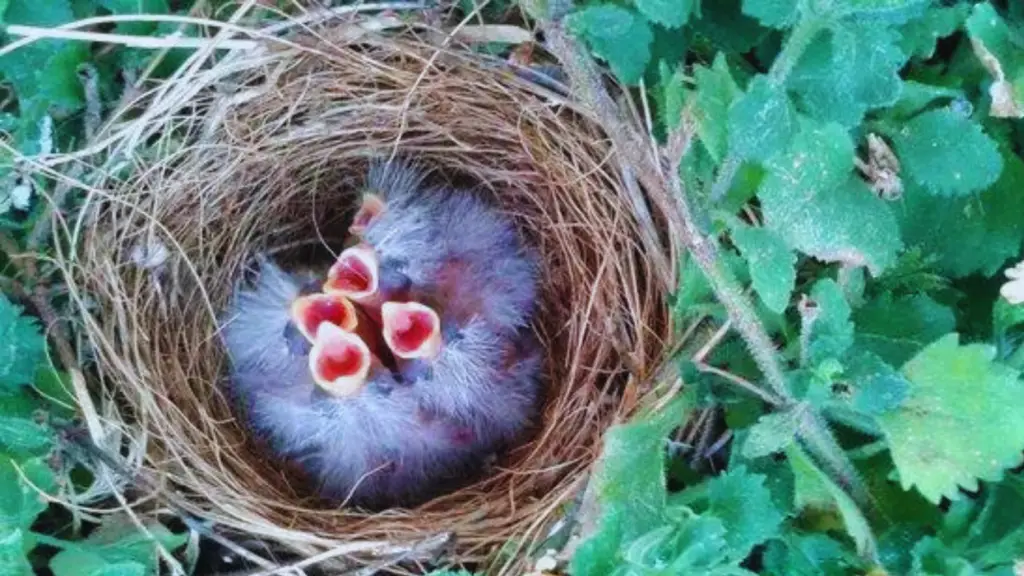
Nurturing the hatchlings requires your unwavering dedication and selflessness as you provide nourishment and protection. As a parent house finch, you play a crucial role in ensuring the survival and growth of your offspring. From the moment they break free from their eggshells, your instinctive instincts kick in, and you become their primary caregiver.
Feeding the hatchlings is your top priority. You tirelessly search for insects, spiders, and seeds to satisfy their voracious appetites. With each meal, you carefully select the most nutritious options, ensuring their healthy development. You tirelessly fly back and forth, delivering food to the nest, never faltering in your mission to keep your young ones well-fed.
But it’s not just about food. Protection is equally important. You stand guard, keeping a watchful eye for any potential threats. You defend your nest fiercely, ready to take on any predator that dares to approach. Your bold and unwavering presence ensures the safety of your vulnerable hatchlings.
Through your exceptional care and unwavering dedication, you witness the wonders of avian reproduction unfold before your eyes. You provide the nourishment and protection necessary for your hatchlings to thrive and grow into strong and independent birds. Your selflessness as a parent exemplifies the marvels of nature and the remarkable bond between parent and offspring.
Growth and Development: From Hatchling to Fledgling
As the hatchlings grow and develop, they spread their wings like eager students in a classroom, ready to take flight and explore the world around them. From the moment they hatch, these tiny birds begin their journey towards independence. At first, they rely entirely on their parents for food and protection. But as they grow, they become more self-sufficient.
During this stage, their feathers start to grow in, replacing the downy fluff that covered them as hatchlings. They also begin to develop their flight muscles, strengthening them through constant exercise. This is an essential part of their growth process, as it prepares them for their first flight.
As the days go by, the hatchlings become more adventurous. They start to venture out of the nest, hopping from branch to branch, testing their wings. Their parents watch over them, providing guidance and protection, but allowing them to explore and gain confidence.
Eventually, the day comes when the hatchlings are ready to leave the nest for good. With a leap of faith, they take their first flight, soaring through the air with newfound freedom. It is a bittersweet moment for their parents, who have cared for them since before they were even born.
Watching the growth and development of house finch hatchlings is a remarkable experience. It reminds us of the wonders of avian reproduction and the incredible journey these tiny creatures undertake as they navigate their way through life.
Challenges and Threats to House Finch Eggs
Despite the challenges and threats faced by these delicate eggs, it’s impossible not to feel a sense of awe and concern for their future survival.
House finch eggs are vulnerable to a variety of dangers during their incubation period. One of the main challenges they face is predation. Many animals, such as snakes, squirrels, and even other birds, see these eggs as a tasty meal. The parents do their best to protect the eggs by building their nests in hidden and well-protected locations. However, not all nests are safe from predators.
Another threat to house finch eggs is human interference. Sometimes, people unknowingly disturb or destroy nests while doing yard work or home renovations. This can unintentionally harm the eggs and disrupt the breeding cycle of these beautiful birds.
In addition, climate change poses a significant threat to the survival of house finch eggs. Rising temperatures and unpredictable weather patterns can affect the availability of food sources and nesting habitats, making it more difficult for the parents to successfully raise their young.
Despite these challenges, there is hope for the future of house finch eggs. Conservation efforts and public awareness campaigns can help protect their habitats and educate people about the importance of preserving these fragile creatures. By taking steps to reduce predation, minimize human interference, and combat climate change, we can ensure that future generations will continue to witness the wonders of avian reproduction and enjoy the beauty of house finch eggs.
The Importance of Conservation Efforts
Now that you’re aware of the challenges and threats facing house finch eggs, let’s shift our focus to the importance of conservation efforts. It is crucial for us to take action and protect these delicate wonders of avian reproduction. By doing so, we can ensure the survival and well-being of the house finch population.
Conservation efforts play a vital role in maintaining the delicate balance of nature. They aim to protect not only house finch eggs but also other species and their habitats. These efforts involve various strategies, such as creating protected areas, implementing strict regulations, and raising awareness among the public.
To help you understand the significance of conservation efforts, let’s imagine a scenario using a table:
| Before Conservation Efforts | After Conservation Efforts | Result |
|---|---|---|
| Shrinking house finch population | Increasing house finch population | Conservation success |
| Destruction of natural habitats | Preservation of natural habitats | Ecosystem stability |
| Lack of public awareness | Heightened public awareness | Support and involvement |
Through these conservation initiatives, we can witness a positive transformation in the status of house finch eggs and their overall ecosystem. So, let’s join hands and contribute to the preservation of these marvelous avian wonders. Together, we can make a difference and ensure a brighter future for house finches and their eggs.
The Beauty and Wonder of Avian Reproduction
Imagine a symphony of delicate melodies, as graceful creatures create new life with their enchanting dance. Witnessing the beauty and wonder of avian reproduction is truly a mesmerizing experience. Here are three incredible aspects that make it so captivating:
- Intricate Nest Building: House finches, like many other bird species, demonstrate their creativity and resourcefulness through their nest-building skills. They meticulously construct nests using a variety of materials, including twigs, grass, and feathers. It’s fascinating to watch them weave these elements together, creating a cozy and safe environment for their future chicks.
- Colorful Eggshells: The vibrant colors of house finch eggs never fail to amaze. Ranging from pale blue to light green, these tiny treasures add a burst of beauty to the world. Each eggshell is carefully crafted, providing protection and nourishment for the growing embryo inside.
- Parental Care: Once the eggs hatch, the dedication and care of the parent birds are truly remarkable. Both the male and female take turns feeding and protecting their nestlings. It’s heartwarming to see them tirelessly bring food and teach their young ones essential survival skills.
In conclusion, avian reproduction is a magical process that showcases the intricate beauty of nature. From the nest-building to the colorful eggs and the nurturing parental care, every step is filled with awe and wonder. Take a moment to appreciate the enchanting dance of life happening right before your eyes.
House Finch Eggs: Fs
How long does it take for a house finch egg to hatch?
House finch eggs typically take about 12-14 days to hatch. During this time, the parent birds take turns incubating the eggs, keeping them warm and protected until they are ready to hatch.
What are the main threats to house finch eggs?
House finch eggs face an array of dangers. From hungry predators to harsh weather conditions, these fragile little spheres must dodge threats at every turn. It’s a perilous world out there for these tiny miracles of life!
How many eggs does a female house finch typically lay in a clutch?
Female house finches typically lay 3-6 eggs in a clutch.
What is the average size of a house finch egg?
House finch eggs are like precious gems, small and delicate. On average, they measure about 0.7 inches long. These little wonders hold the promise of new life, bringing joy to the avian world.
How do house finch parents divide the responsibilities of incubating the eggs?
House finch parents divide the responsibilities of incubating the eggs by taking turns. The female typically incubates during the day while the male takes the night shift, ensuring the eggs receive constant warmth and care.
Conclusion
Congratulations! You’ve just witnessed the marvels of avian reproduction through the captivating journey of house finch eggs.
From the magical moment of fertilization to the delicate process of incubation, these tiny wonders never cease to amaze.
But beware, as challenges and threats lurk around every corner for these fragile eggs.
So, let’s join forces in conservation efforts to protect these precious creations.
Remember, the world of avian reproduction is a truly beautiful and awe-inspiring spectacle that deserves our utmost respect and admiration.
Keep marveling, my fellow bird enthusiasts!

